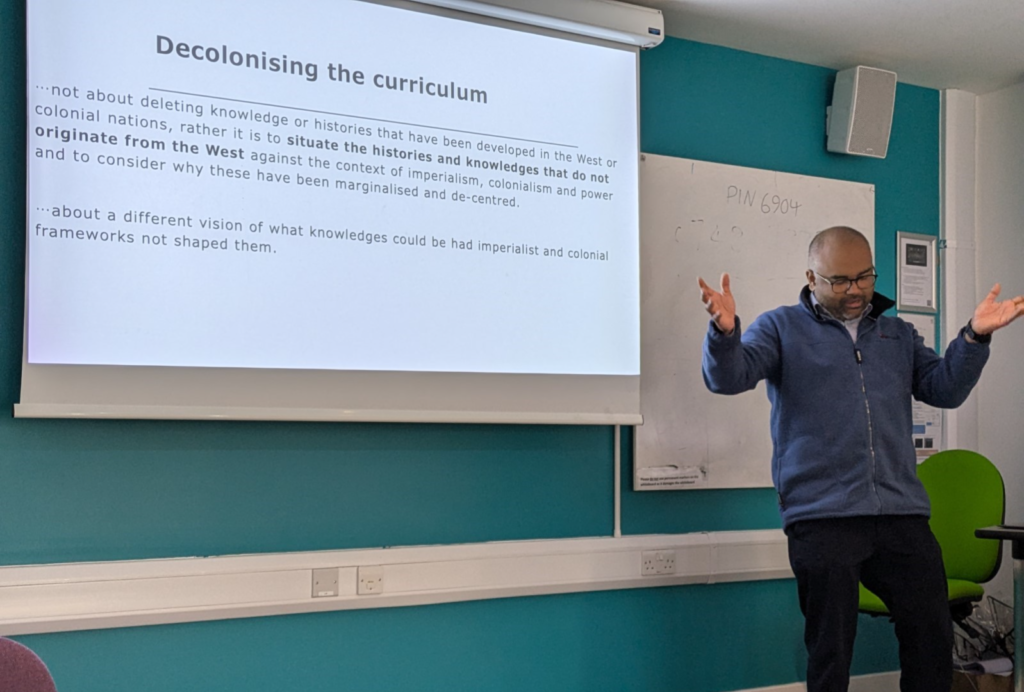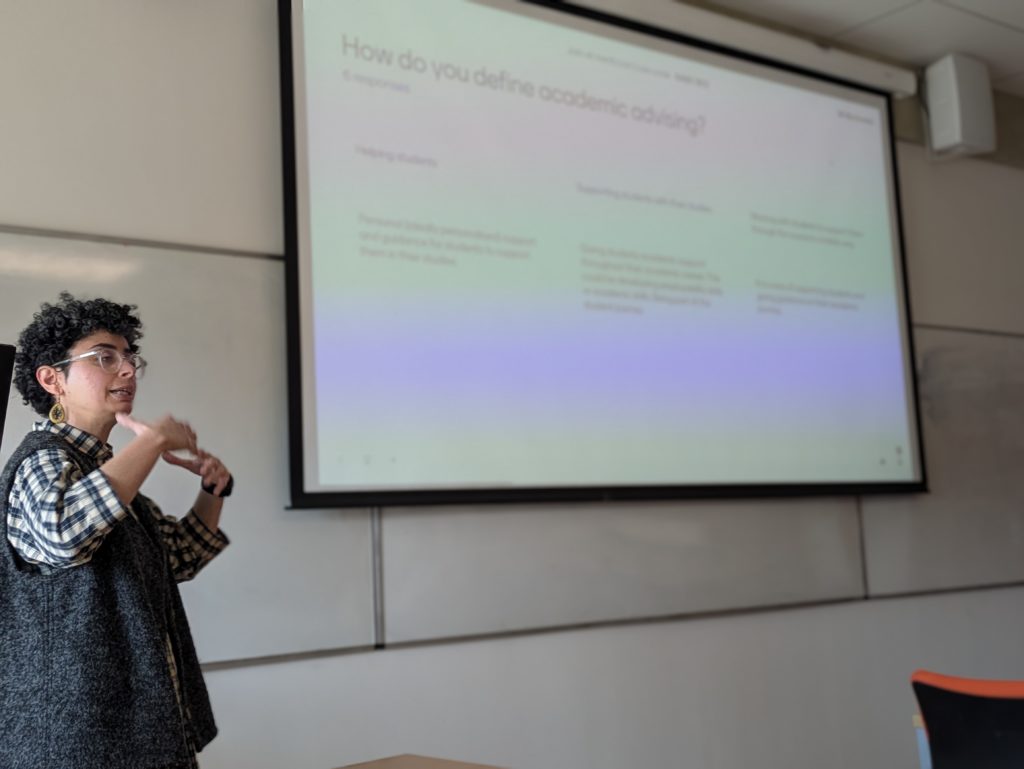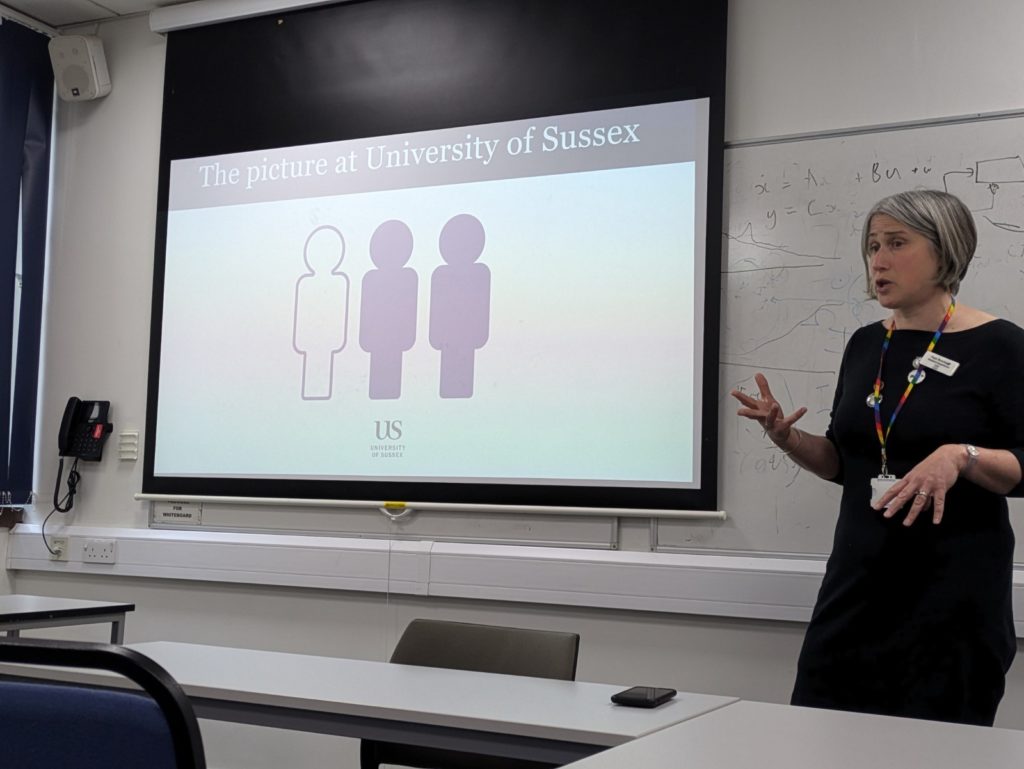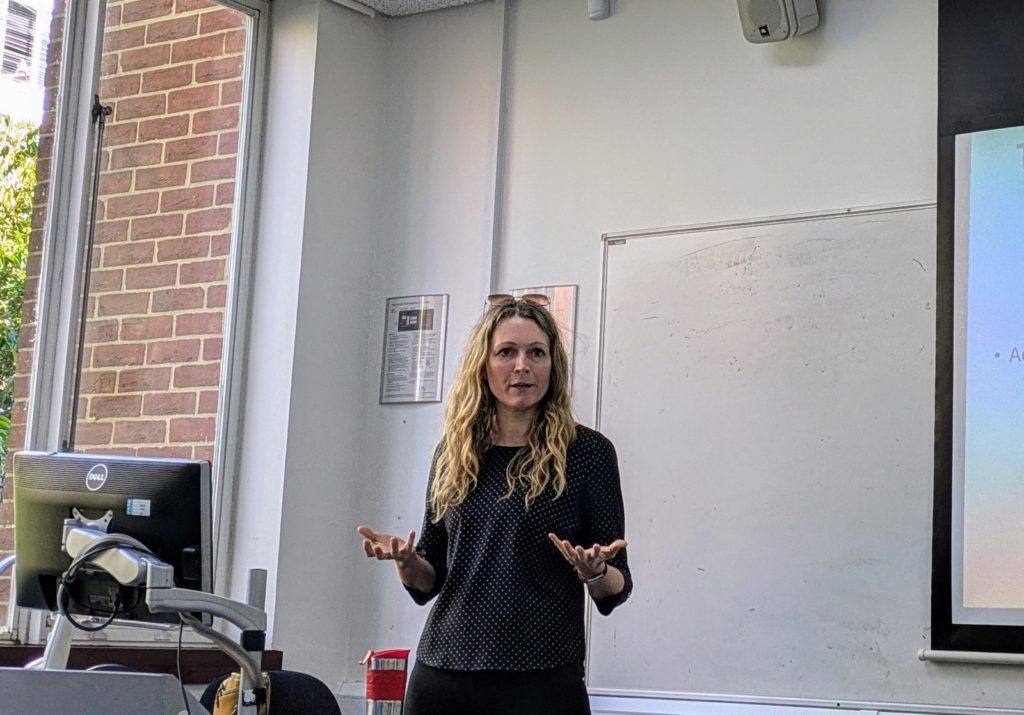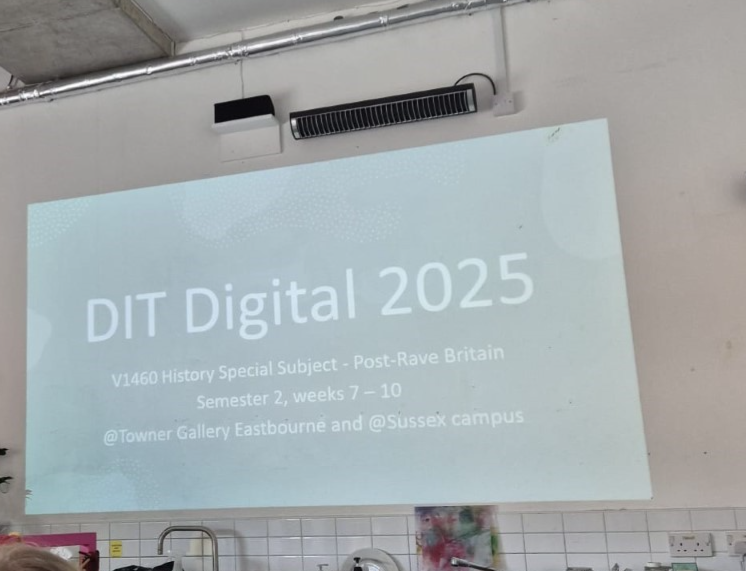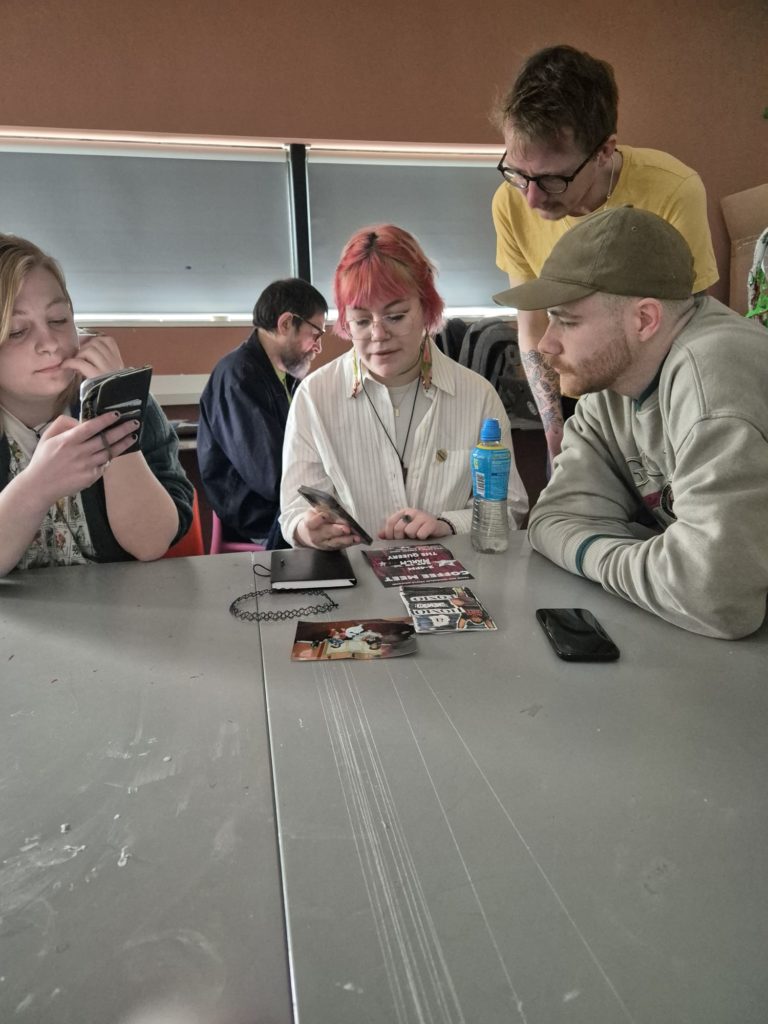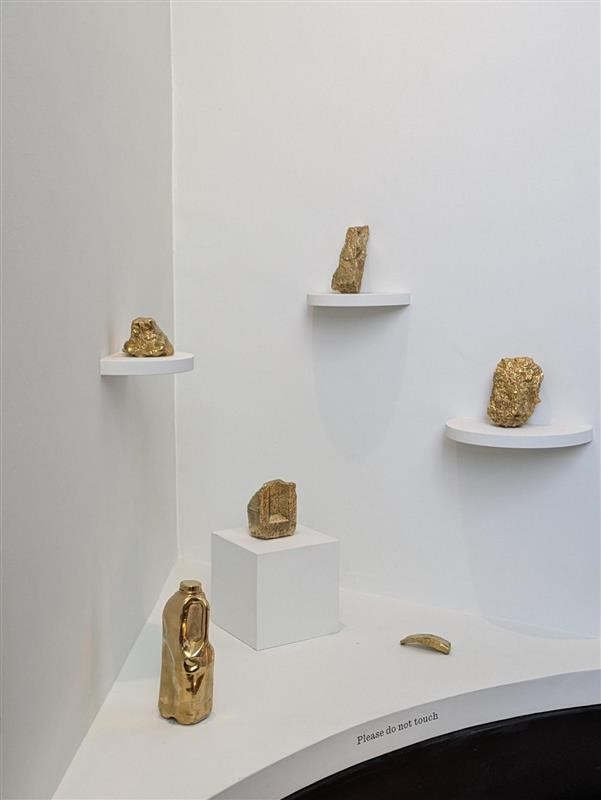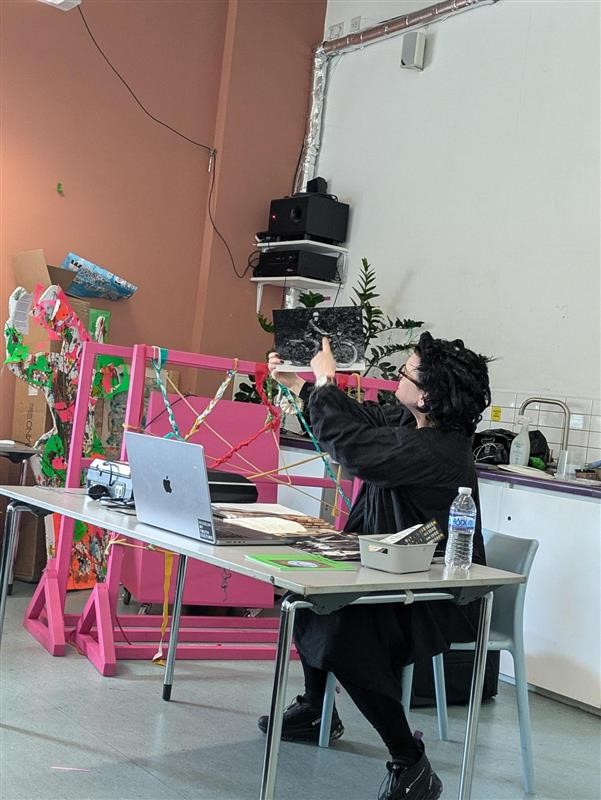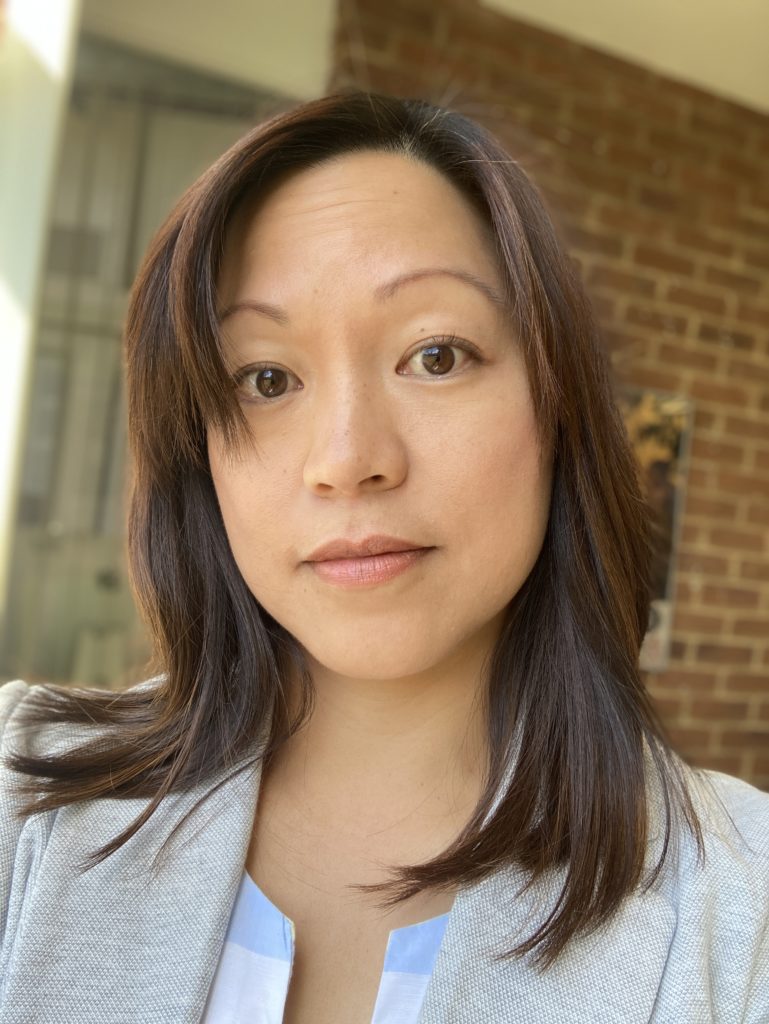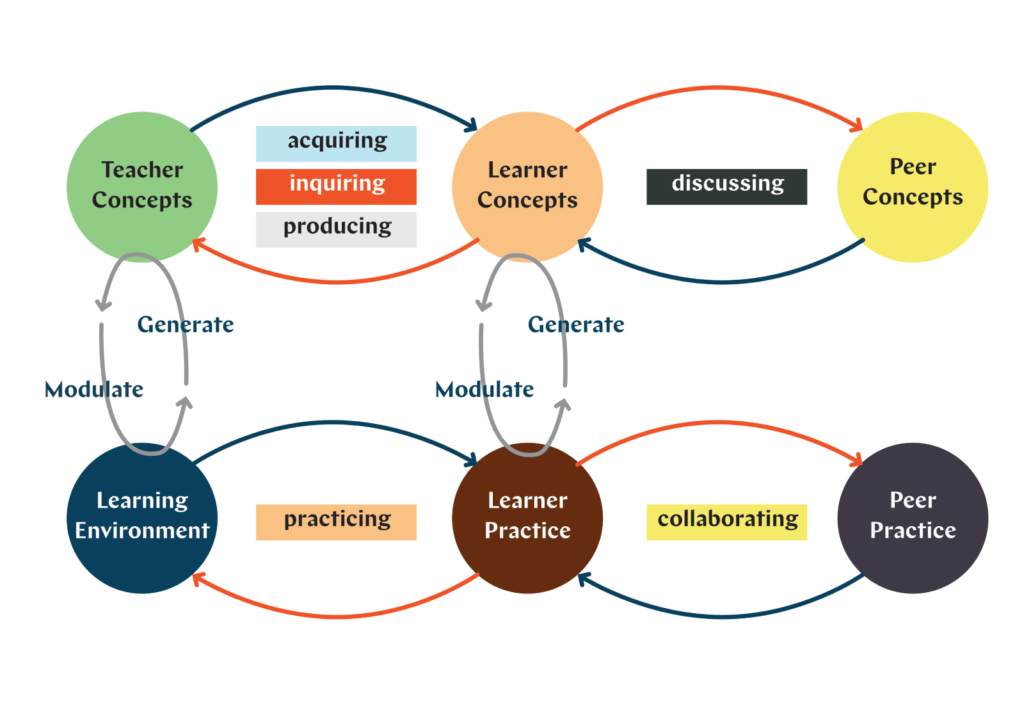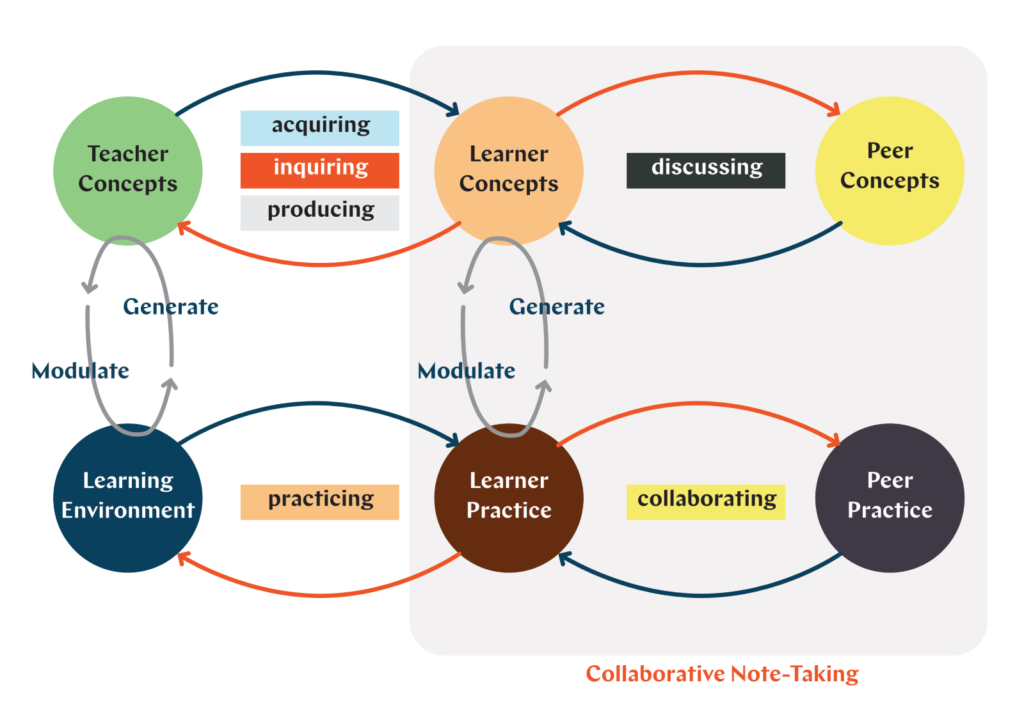Workshops: Neurodiversity Affirming Pedagogies (Em Harrison) and Student Co-Creation in the Curriculum (Dr Carli Rowell)
The final day of Inclusivity Week brought together two rich sessions focused on the importance of student partnership in shaping inclusive pedagogies. Both initiatives were funded by the University’s Education and Innovation Fund, and it was excellent to see the respective outputs that the Fund supported—each demonstrating brilliant work.
Neurodiversity Affirming Pedagogies
Led by Em Harrison (Assistant Professor in Digital Practice)
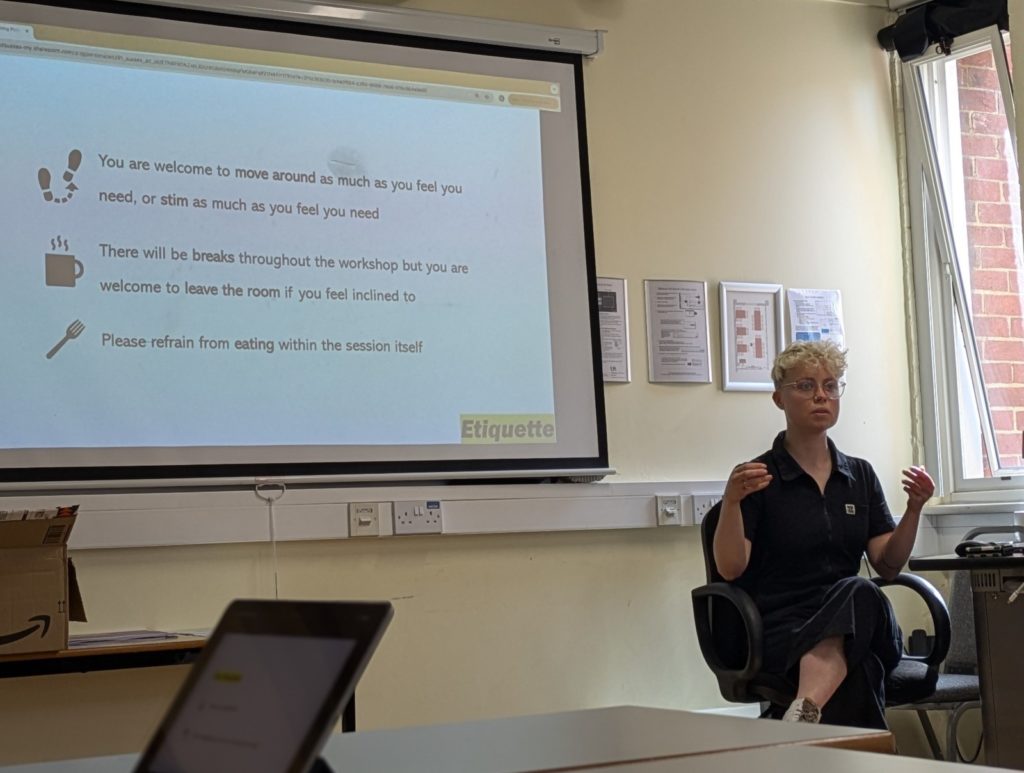
This session brought together ten participants to explore the principles of neurodiversity affirming pedagogies. Em began with a gentle icebreaker—name, pronouns, and what had drawn people to the session—before grounding the group in the foundations of the neurodiversity movement: a challenge to the idea of a single “normal” mind and a call to celebrate cognitive diversity as a natural and valuable form of human variation.
Em shared findings from an Education and Innovation Funded project, involving both staff and students at Sussex who identified as neurodivergent. The first stage was an anonymous survey exploring the barriers faced in teaching, learning and working environments. This was followed by a participatory research workshop aimed at consulting the neurodivergent community and piloting neurodiversity-informed teaching approaches.
The findings, viewed through an intersectional lens, highlighted a range of challenges for neurodivergent students in higher education:
- A lack of clarity around expectations for participation, attendance, and Canvas navigation
- Sensory overwhelm in learning spaces—from lighting to noise to the smell of hot drinks
- Barriers created by inconsistent or overwhelming communication (e.g. unclear deadlines, email overload)
- Barriers in disclosing neurodivergence at university, particularly for students who described their ethnicity as ‘black’ or ‘ethnic minority living in the UK’
- Generic or ineffective reasonable adjustments, including inaccessible software or blanket extensions.
Em encouraged the group to reflect on how these insights might inform our practice. Some changes, like checking lighting in teaching spaces or discussing norms around movement and participation, are simple but can have a big impact. Others require broader shifts, like universal design approaches to curriculum and assessment.
Key takeaways included:
- Clear communication: Use plain English, avoid unnecessary jargon and abbreviations
- Inclusive materials: Use off-white backgrounds, sans serif fonts, and visual icons
- Assessment support: Provide assessment exemplars and consolidate assessment information in one place
- Flexibility and variety: Use multiple media formats where possible with regards to communicating course content and inviting student engagement with the content.
- Shared ownership: Involve students in shaping the sensory and structural environment of the classroom
This session was a call not only for awareness, but for meaningful change—one rooted in listening, learning, and action.
Please see Em’s slides, which contain brilliant resources and guidance on inclusive teaching practices. Note, the Neurodiversity Affirming Pedagogies toolkit will be available soon and linked to from this blog post.
Student Co-Creation in the Curriculum
Led by Dr Carli Rowell (Associate Professor in Sociology)

The final session of the week, facilitated by Dr Carli Rowell, offered a case study in co-creation with students as a mode of inclusive pedagogy. Carli shared how she designed and delivered a second-year Sociology module—Class, Culture and Conflict: A View from Within—in collaboration with four working-class students, funded initially through the Student Connector programme and then evaluated via the Education and Innovation Fund.
What emerged was a student-centred module shaped by lived experience of class. Students were not merely consulted on curriculum content, they designed it. They reviewed topics, crafted reading lists, designed assessments, and gathered peer feedback.
Co-creation, Carli argued, is about more than diversifying content. It means rethinking power in the classroom: Who decides what is taught? Whose knowledge is valued? How are students positioned—as consumers, or as contributors?
The benefits were clear:
- Students developed leadership and communication skills
- They felt greater belonging and ownership of the curriculum
- The process surfaced previously marginalised perspectives and fostered critical engagement
- It encouraged flexible and inclusive teaching methods rooted in mutual respect
Even without significant funding, Carli offered practical ways to embed co-creation:
- Invite students to suggest readings or seminar topics
- Provide space for lived experience in assessment
- Reflect on the emotional and social dynamics of the classroom, not just content delivery
See Carli’s slides and guidance around co-creation with students.
A shared message to close the week
From neurodiversity-affirming teaching to working-class student partnership, the two final sessions of the week shared a common thread: that inclusivity isn’t achieved through surface-level interventions, but through deep, ongoing relationships with students.
Inclusivity Week ended not with neat solutions, but with questions that invite us to reimagine our classrooms:
- What if students helped shape not just what we teach, but how we teach it?
- What if difference wasn’t something we “accommodate”, but something we celebrate, expect, and design for?
As the week drew to a close, participants left with the sense that inclusive teaching is a shared responsibility—and that every small shift in practice can help transform a student’s experience of belonging. The workshops, along with this series of blog posts, provide resources and guidance to support both small and significant changes.
I encourage you to read the five short blog posts that complement the week’s events:
Use these resources to identify some short- and longer-term changes you can make to your pedagogic practice to foster greater inclusivity.
Universities are institutions embedded in a history of hierarchy and exclusion. In many ways, this legacy—and its enduring impact on the student experience—remains invisible. It exists in the language we use, the content we teach, our assessment practices. It shapes our curriculum in ways we often overlook.
Inclusivity Week offered practical guidance on how we can begin to unpick these embedded prejudices and create spaces that are truly for everyone—spaces that bring people in, rather than keep them out. And, most importantly, it reminded us to celebrate diversity as an opportunity for learning and growth.


